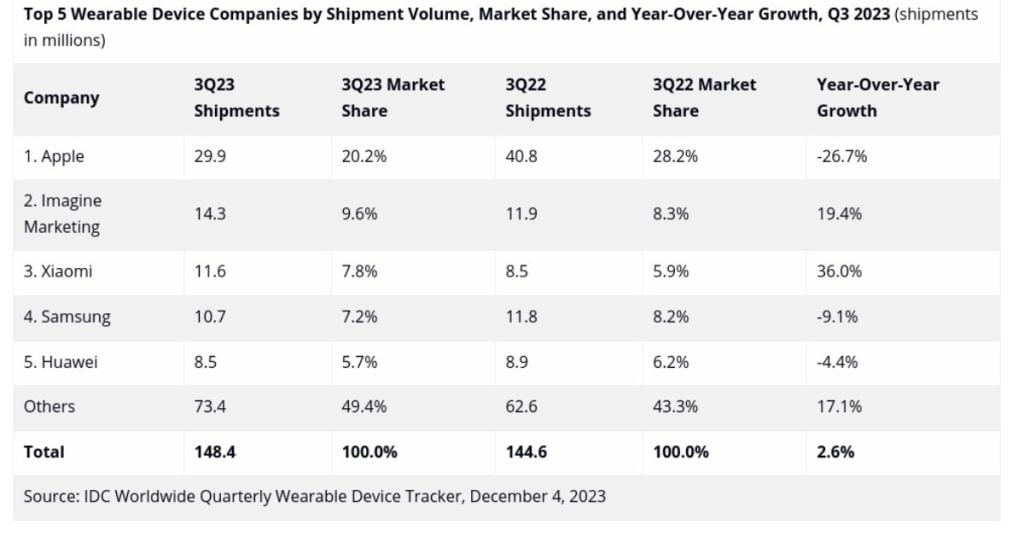The global wearable device market experienced modest growth in the third quarter of 2023 (Q3 2023), according to a new report by the International Data Corporation (IDC). Shipments reached an all-time high for the third quarter, totaling 148.4 million units, representing a 2.6% increase year-over-year.
This positive trend is particularly noteworthy as it surpasses shipments in Q3 2021 (142.1 million) and Q3 2022 (144.6 million), which were driven by pandemic-related spending sprees.
Apple retained its position as the top wearable device vendor with 29.9 million units shipped in Q3 2023, securing a 20.2% market share. However, the company’s year-over-year growth declined by 26.7%.

Imagine Marketing, the parent company of the Indian audio and wearable brand boAt, emerged as the second-largest vendor in Q3 2023, capturing 9.6% of the market with 14.3 million shipments. This represents a significant growth of 19.4% year-over-year.
boAt’s success can be attributed to its focus on the Indian market, where it has established itself as a market leader with a vast range of affordable wearable devices. The company recently launched its “Smart Ring” priced Rs. 8,999 with essential health and fitness features, further expanding its portfolio and catering to the growing demand for smart rings.
Jitesh Ubrani, research manager, Mobility and Consumer Device Trackers at IDC says “Smart rings from newer brands such as Oura, Noise, boAT, Circular, and others are expected to jumpstart the new form factor in the coming quarters while also putting pressure on the incumbent brands to innovate on health tracking.”
On the other hand, Xiaomi secured the third position with 11.6 million units shipped, holding a 7.8% market share. The company witnessed the highest year-over-year growth among the top five vendors, with a 36.0% increase.
Samsung and Huawei followed with 10.7 million and 8.5 million units shipped, respectively, maintaining their positions in the top five. Samsung’s market share remained relatively stable at 7.2%, while Huawei experienced a slight decline to 5.9%.
Related:
- boAt Lunar Tigon Smartwatch with 1.45″ AMOLED display, BT calling & stylish strap options launched
- Xiaomi 14: New flagship with snapdragon 8 gen 3 only for $599
- Alldocube iWork GT 12: AMD 2-in-1 laptop, $100 off and free keyboard
- Vivo iQOO 12 Pro: Save $100 on the flagship gaming phone
- Best iPhone 15 Pro cases for 2023: Dbrand, Spigen, RhinoShield & More
(Source)







